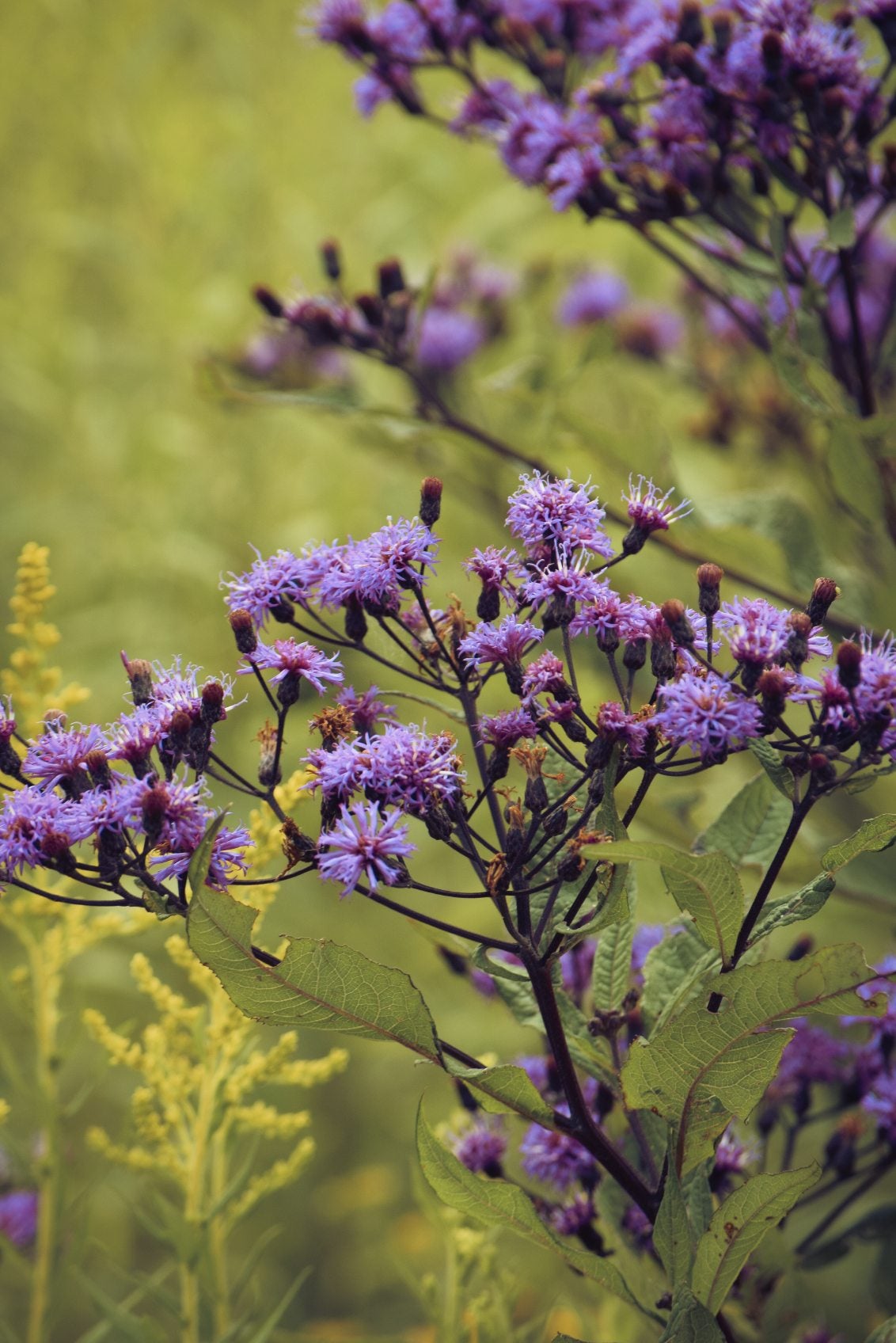Ironweed Management: Tips On Controlling Ironweed Plants
You can do some damage to it manually, but usually ironweed will find its way back. Persistence and a few tips on how to kill ironweed should help.


Ironweed is an appropriately named plant. This perennial flowering native is one tough cookie. Controlling ironweed plants has been equated with nuking a fortified bunker. You can do some damage but usually the plant will find its way back.
This may sound discouraging but consistent mechanical management and some organic post-emergent herbicides are effective ironweed management. A few tips on how to kill ironweed should get you on your way to controlling this pest of the field.
Is Ironweed Invasive?
Ironweed establishes in neglected and disturbed areas. It is common throughout the United States, especially in the central prairies.
This herbaceous plant produces multiple branches and bright purple flowers. Once mature, ironweed can grow 10 feet (3 m.) in height with densely fibrous taproots and rhizomes.
The entrenched root system makes hand pulling nearly impossible and leaving any part of the root behind will result in regrowth.
In large fields, herbicides combined with mowing are the recommended methods to ironweed plant control. Ironweed is one of the most common problem plants found in pastures across the American central and southern zones. The largest variety, tall ironweed, can produce over 14,000 seeds in a season. Combine this aptitude with the tenacious root system and you have one persistent plant.
In unmanaged settings, ironweed can spread and out-compete native plants. Early detection can help prevent rampant colonizing. Timing of treatments also affects the success of controlling ironweed plants. A two-pronged assault is necessary to get a handle on this stubborn pest plant.
Sign up for the Gardening Know How newsletter today and receive a free copy of our e-book "How to Grow Delicious Tomatoes".
Mechanical Ironweed Plant Control
Early mowing followed by a subsequent mowing a month later has been shown to give the greatest control. Mowing by late May to early June followed by mechanical intervention when plants are 6 to 8 inches (15-20 cm.) tall can reduce up to 87 percent of the population.
Many gardeners with natural stands of wild forbs actually prefer to let the weeds form their lovely flowers, which attract butterflies and bees. The plants are then mowed in fall to prepare the field for winter dormancy. Plants will re-sprout in spring. In areas, where the plant is a nuisance, however, it is important to mow before any flowers are spotted to prevent seeds.
How to Kill Ironweed
Unfortunately for those of us who prefer not to use any chemicals in our land, complete ironweed management can’t be achieved without herbicides.
You can mechanically reduce a stand with consistent mowing, but the roots will still be viable in soil, ready to produce more stems.
Recommended treatment programs state that chemical control can take 12 to 18 months for total success. So, mow early and wait for the plants to grow back, but because seed stays viable in soil for many years, the following spring may see another crop of new plants. It is, therefore, necessary to repeat the process the following year. The new crop shouldn’t be as thick as the initial population.
Ironweed management is an ongoing process in many regions. Consistent control is usually necessary in subsequent years. If you need to learn more non-toxic methods of eliminating ironweed from your yard, contact your local extension service agent.

Bonnie Grant is a professional landscaper with a Certification in Urban Gardening. She has been gardening and writing for 15 years. A former professional chef, she has a passion for edible landscaping.